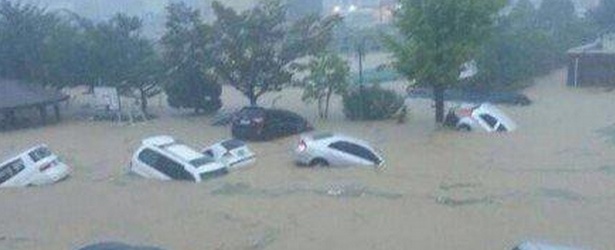Heavy rain, flash floods and landslides hit South Korea

Parts of South Korea experienced huge amounts of rainfall and flooding on August 24 and 25, 2014. Heavy rain was brought by the same system that caused severe floods in Japan last week.
At least 1 person was killed and four others were missing after a bus was swept away by floods near the southern city of Changwon yesterday. Four people were killed in Busan, the second largest South Korean city, after their car became flooded in a tunnel. Heavy rain also triggered landslides that demolished a senior citizens’ center, Yonhap reported.
According to the same agency, Korea Hydro and Nuclear Power Co. (KHNP) decided to shut down the Gori-2 nuclear power plant after water entered the cooling part of the facility.
"As excessive water flowed into a building that takes in seawater to cool down turbine steam, we decided to manually halt the operation of the nuclear reactor for the safety of the electrical equipment," KHNP said.
According to the Korea Meteorological Administration, a total of 242 mm (9.5 inches) of rain was recorded in parts of Busan on August 25.
130 mm of rain fell in 1 just one hour in Busan, according to media reports. 270.5 mm of rain was recorded in parts of Changwon by 16:00 local time.
South Korea’s Minister of Security and Public Administration ordered schools to adjust their opening and closing hours according to weather conditions and to review evacuation procedures, while advising citizens to prepare essential items in case of a sudden need to evacuate.
More heavy rain is expected in the coming days.
Heavy Flooding Hits Busan, South Korea – 4 Killed, 5 Missing as of 6pm http://t.co/Qmgv4KejMQ pic.twitter.com/H826f8hBvY
— The Korea Observer (@korea_observer) August 25, 2014
Featured image credit: Korea Observer

Storm clouds are made from EMFs and ions reacting. 5G increases the amount of EMFs and ions in the air creating weather like what is seen in the photos and around the world for four straight months without ceasing. Seoul is a leader in rolling out 5G.
The weather has become more severe as more 5G has been rolled out and will continue to become unimaginably more severe as the testing and roll outs commence.